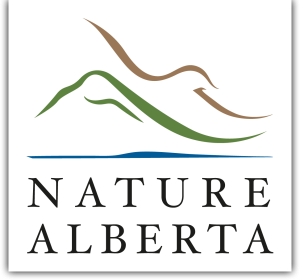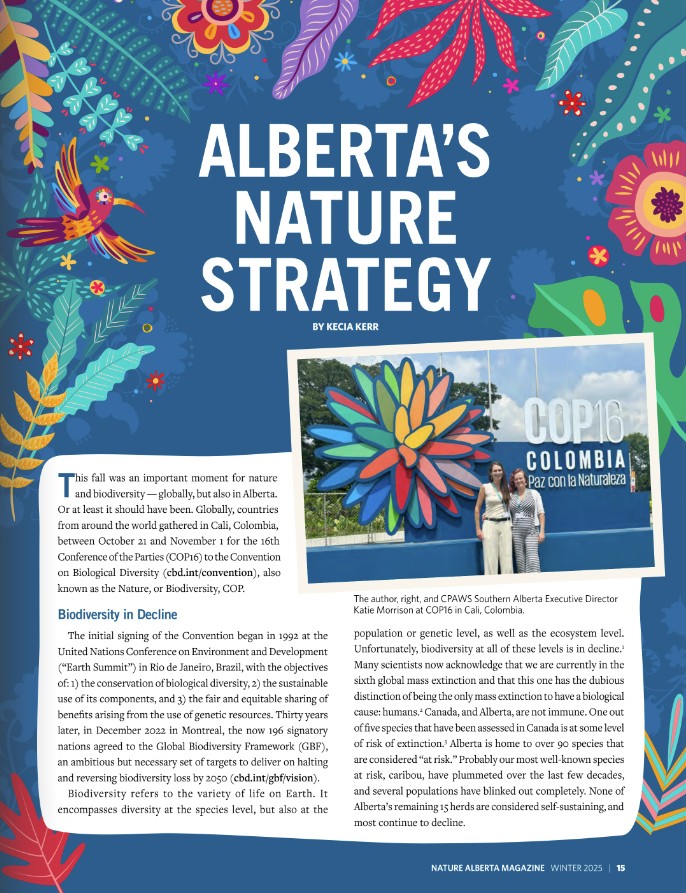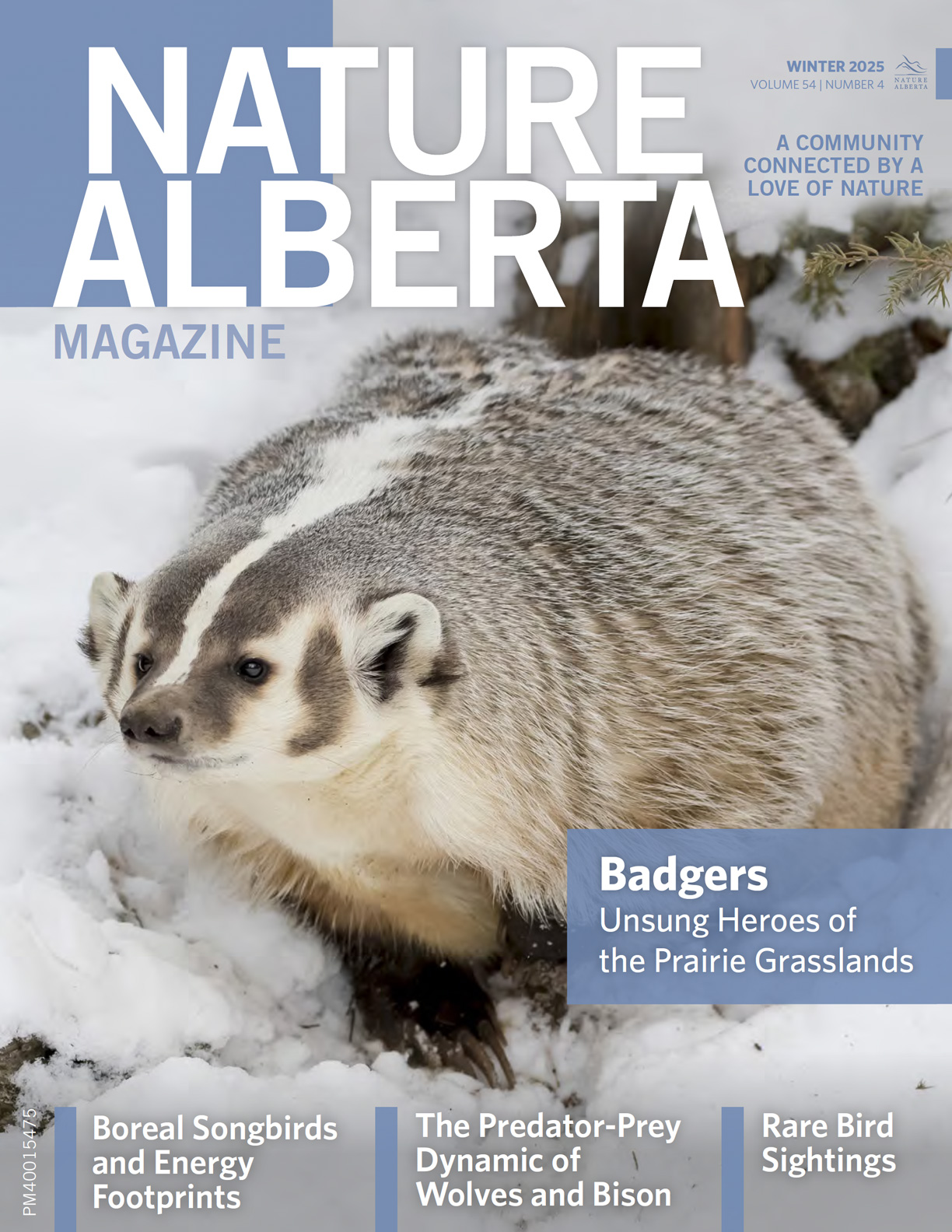Alberta’s Nature Strategy
11 February 2025

By Kecia Kerr
This fall was an important moment for nature and biodiversity — globally, but also in Alberta. Or at least it should have been. Globally, countries from around the world gathered in Cali, Colombia, between October 21 and November 1 for the 16th Conference of the Parties (COP16) to the Convention on Biological Diversity (cbd.int/convention), also known as the Nature, or Biodiversity, COP.
Biodiversity in Decline
The initial signing of the Convention began in 1992 at the United Nations Conference on Environment and Development (“Earth Summit”) in Rio de Janeiro, Brazil, with the objectives of: 1) the conservation of biological diversity, 2) the sustainable use of its components, and 3) the fair and equitable sharing of benefits arising from the use of genetic resources. Thirty years later, in December 2022 in Montreal, the now 196 signatory nations agreed to the Global Biodiversity Framework (GBF), an ambitious but necessary set of targets to deliver on halting and reversing biodiversity loss by 2050 (cbd.int/gbf/vision).
Biodiversity refers to the variety of life on Earth. It encompasses diversity at the species level, but also at the population or genetic level, as well as the ecosystem level. Unfortunately, biodiversity at all of these levels is in decline.1 Many scientists now acknowledge that we are currently in the sixth global mass extinction and that this one has the dubious distinction of being the only mass extinction to have a biological cause: humans.2 Canada, and Alberta, are not immune. One out of five species that have been assessed in Canada is at some level of risk of extinction.3 Alberta is home to over 90 species that are considered “at risk.” Probably our most well-known species at risk, caribou, have plummeted over the last few decades, and several populations have blinked out completely. None of Alberta’s remaining 15 herds are considered self-sustaining, and most continue to decline.
The primary driver of biodiversity loss is habitat loss and degradation. Other factors, such as over-exploitation, climate change, invasive species, pollution, and a combination thereof, are also at play for some species. The Alberta Biodiversity Monitoring Institute’s human footprint map of Alberta provides a very clear view of why nature and biodiversity are in decline in the province (see Figure 1). It is clear that more needs to be done to stop the bleeding when it comes to nature in Alberta. [Image from https://maps.abmi.ca/#/?aoi=15&dataset=34044,34042,34041,34046,34043,34045 near here.]
Vision vs. Jurisdiction
In the lead-up to COP16, signatory countries were tasked with developing strategies and action plans laying out how they will implement the GBF and reach its targets. Canada released its strategy in June 2024.5 However, in many countries, including Canada, national governments do not hold much of the jurisdiction over lands and waters that will determine the success of a country in reaching its commitments. In Canada, much of the responsibility for land management and protection is in the hands of the provinces and territories. This was a major topic of conversation at COP16. In some cases, the discussion focused on concern over subnational governments putting up roadblocks to progress, but in many cases, there were excellent examples of leadership and pride in doing what is needed to bring humans towards being at “peace with nature” (the theme of COP16). Several provinces in Canada have committed to the GBF or some of its targets, including Quebec, Manitoba, B.C., and Yukon. Quebec, true to form, has charted its own path to reverse biodiversity loss, including developing its own plan and using innovative initiatives to get the public involved.
When the national Nature Strategy came out, the Government of Alberta labeled it “unconstitutional.”6 The provincial government has since announced it will be developing a Nature Strategy of its own and began public engagement for development of the strategy in the fall.7 Unfortunately, government communications on the Strategy do not make clear that an Alberta Nature Strategy’s primary goal would be halting and reversing biodiversity loss. In fact, a government spokesperson stated the nature strategy would “help continue our proud environmental legacy while also keeping people working.”8 At the government-hosted Nature Summit, a gathering of stakeholders to discuss the development of a Nature Strategy on October 16, 2024, three Alberta ministers emphasized that the strategy would help Alberta communicate about what is currently being done to manage nature.
These communications point to a denial that current policies, strategies, and actions are precisely what has resulted in consistent declines in nature and biodiversity. We need much more than the status quo to turn things around. Hence, my initial reference to the fact that fall 2024 SHOULD have been an important moment for nature in Alberta. Fortunately, many Albertans did fill out the government’s Nature Strategy survey, quite a few with the help of the Canadian Parks and Wilderness Society (CPAWS) survey guide.9 And a dozen Alberta-based organizations, including CPAWS Northern and Southern Alberta chapters and Nature Alberta, released A Collaborative Vision for Alberta’s Nature Strategy, and sent those ideas to the government.10 Once the province releases its draft Strategy, hopefully it will be open for public comment. This will be an important moment for Albertans to speak up for nature.
Albertans care deeply about nature and want to see more of it protected, and all of it better managed. Public engagement on a Nature Strategy for Alberta will be a great opportunity for us to make that clear to the government, once again.
References
- Finn, C., F. Grattarola and D. Pincheira-Donoso (2023). More losers than winners: investigating Anthropocene defaunation through the diversity of population trends. Biological Reviews, 98: 1732-1748. https://doi.org/10.1111/brv.12974
- Kolbert, E. (2014). The Sixth Extinction: An Unnatural History. United States: Henry Holt and Company.
- Canadian Endangered Species Conservation Council (2022). Wild Species 2020: The General Status of Species in Canada. National General Status Working Group: 172 pp. https://www.canada.ca/en/environment-climate-change/services/species-risk-public-registry/general-status/wild-species-2020.html
- ABMI: The Status of Human Footprint in Alberta (2023). https://archive.abmi.ca/home/reports/2023/human-footprint/details.html
- Environment and Climate Change Canada (2024). Canada’s 2030 Nature Strategy: Halting and Reversing Biodiversity Loss in Canada. https://www.canada.ca/en/environment-climate-change/services/biodiversity/canada-2030-nature-strategy.html
- “Federal Nature Strategy is unconstitutional: Minister Schulz.” Government of Alberta, 14 June 2024. https://www.alberta.ca/release.cfm?xID=90520F1689378-A3D4-43B5-ED237B85D81F9EA9
- Nature strategy engagement. Government of Alberta (2024). https://www.alberta.ca/nature-strategy-engagement
- “Conservation groups, NDP critical of survey for Alberta's nature strategy.” CTV News, 29 Oct. 2024. https://edmonton.ctvnews.ca/conservation-groups-ndp-critical-of-survey-for-alberta-s-nature-strategy-1.7091436
- A CPAWS Guide to the “Nature Strategy” Survey (2024). https://cpawsnab.org/wp-content/uploads/2024/09/CPAWS-Survey-Guide-to-Nature-Strategy-Survey.pdf
- “Government of Alberta must commit to expanding parks, protecting wildlife and biodiversity, says coalition of conservation and environmental experts.” CPAWS Northern Alberta, 15 Oct. 2024. https://cpawsnab.org/all-news/engos-release-vision-for-nature-strategy/
Kecia Kerr is the Executive Director of the Canadian Parks and Wilderness Society (CPAWS) Northern Alberta Chapter, a role she has held since June 2017. She holds a PhD in ecology from McGill University and is a Professional Biologist. She is fortunate to be able to walk her dog in Edmonton’s river valley and ravine system every day.
Read the Original Article for this Post
For a richer reading experience, view this article in the professionally designed online magazine with all images and graphs in place.
This article originally ran in the Winter 2025 issue of Nature Alberta Magazine (Vol. 54 | No. 4).


